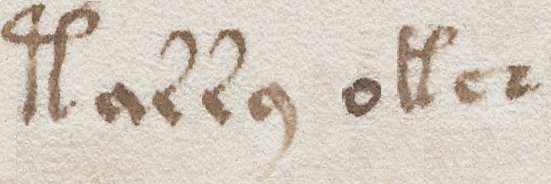London, UK, 11 Nov 2010. In a surprising twist worthy of Voldemort himself, A-list children’s author and philanthropist J.K.Rowling has stepped forward to claim responsibility for the popular Internet cipher mystery meme “The Voynich Manuscript”.
She now says it all was a 1990 publicity stunt for an early release of “Harry Potter and the Philosopher’s Stone”, which was – much like Norwegian band’s a-ha’s 1985 hit single “Take On Me” – released multiple times before gaining market acceptance from young readers. Rowling’s first version (“Harry Otter and the Voynich Manuscript“) was set in “Hogshead School of Wizardry” and introduced many of the timeless elements of her story that toy conglomerates have since stripmined so mercilessly, but where all the characters were animals – for example, Ron Weasel, Hermione Echidna, and the ancient Albus Iguanodon (though note that Rubeus Hagfish played only a minor role).
In an attempt to promote her book to publishers, Rowling assembled her own ‘Voynich Manuscript’ on cafe tables in Edinburgh on old vellum she’d bought in a jumble sale, and added a threadbare cover story linking it to Holy Roman Emperor Rudolph II that ought to make any sensible historian shake his or her head in appalled disbelief: the fake manuscript then somehow ended up in the Beinecke Rare Book and Manuscript Library at Yale University (much to its curators’ embarrassment). But once some early Internet chat group participants got hold of low-quality “CopyFlo” scans of it and decided to try to ‘crack’ its cipher, the rest is cryptographic and cultural history.
“To all the codebreakers who have fruitlessly spent decades on this, I can only apologize for my viral marketing prank”, says Rowling. “Honestly, I tried to flag it was a fake on the first page but perhaps the clue was simply too obvious:-”
As a postscript, Rowling did subsequently manage to get all copies of “Harry Otter and the Voynich Manuscript” pulped: however, copies of her intermediate version (“Harry Snotter and the Handkerchief of Doom”) do still occasionally come up at auction. Jim Reeds was unavailable for comment yesterday.

😀
Peeves: ah, weren’t you a pangolin in “Harry Otter”?
Ahoj, Nick,
Přeložím ti to alchymistické slovo. MaRRq.
To slovo po překladu má význam : dar Rá.
Jestli něco znáš o egyptské alchymii, tak Rá (Ré), je symbol, kterým alchymisté značili Slunce ( Zlato),(Aurum). A slovo dar má význam : něco dostat darem. To slovo je vytržený z kontextu. Význam je : Dar zlata.
Taky ti přeložím červený znaky ze strany 67r.
Roccq, SqocccS, poqMccq, qMoccq, qMoccq, poMcaocq, oam, oMaRa.
R zla 2,,sí oc 3, poj mlgi, a moga 2, a moci 2,, poť si oco,,,sít,, zta Rá.
R zla 2 = ( R= rtuť,,zla = zelené zlo, dvojmocné,= rtuť rozpuštěná v kyselině,chlorid rtuťnatý),,sí = zasij,, oc3 = kyselina 3 krát destilovaná,,,poj mlgi = spoj mlhu,, a moga 2 = a kapalinu 2,,a moci 2 = dvojmocný 2,, poť si oco =destiluj kyselinu,,sít = dodej,, zta Rá = 100 dílů zlata.
Čus Josef.
rukopis je alchymie.100%.
Sounds less like “alchemy” than a text of metallurgical method, expressed in the way the ancient world did. That is, with religious overtones and associations.
LOL! So this is JK Rowling’s “Pulped Fiction”?
Pingback: Thank you Beinecke! Color scans of glory! - Tweleve.org